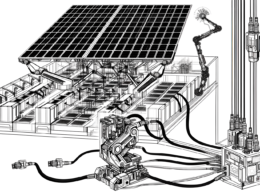In a world where our tech hunger knows no bounds, Taiwan Semiconductor Manufacturing Co. (TSMC) is stepping up with something that might just change the game: their next-gen System-on-Wafer (SoW) packaging technology. This leap in packaging might make today’s tech heavyweights look like featherweights if TSMC’s recent announcement is any indication.
Here’s the lowdown
TSMC has just unveiled its plans to advance its already formidable System-on-Wafer (SoW) technology, aiming to magnify both size and power to previously unimaginable scales. SoW tech essentially aligns multiple microchips on a single silicon wafer, offering a means to package processors that are effectively much larger than our current offerings.
Unlike the first-generation SoW that handled only processing dies, the new iteration named SoW-X is set to integrate High Bandwidth Memory (HBM) directly onto the wafer. Why is this important, you ask? Well, it adds memory without cumbersome interconnects, possibly cutting costs and complexity.
The scale is jaw-dropping: the new SoW-X technology will require a full 300-millimeter silicon wafer, making existing large processors like the AMD MI300X seem petite by comparison. AMD’s MI300X, a hefty processor designed for AI applications, comprises 20 individual chiplets, including 8 GPUs and HBM modules. With SoW-X, we could look at packing up to 10 times that compute capacity.
What’s the catch?
There’s a caveat: these behemoths will guzzle power like no other — up to 17,000 watts, by TSMC’s estimates, unlikely to fit on your desktop anytime soon. Plus, they’ll be expensive. To handle the significant heat and power management needs, the whole assembly will include complex layers for cooling and power delivery. Despite the enormous power draw, TSMC states the performance-per-watt will be 65% higher than traditional setups.
The future looks…Wafery?
So, will your next gaming rig benefit from this? Not directly, but in time, the tech might trickle down into consumer hardware. As it stands, SoW-X tech isn’t expected to hit commercial applications until 2027, and even then, it’s likely reserved for the biggest players with deep pockets running large AI data centers.
In a world pushing against the physical limits of current semiconductor technology, will TSMC’s SoW-X prompt the next evolution in chip design? We don’t know what comes after SoW-X, but if history tells us anything, processing power isn’t about to plateau.








